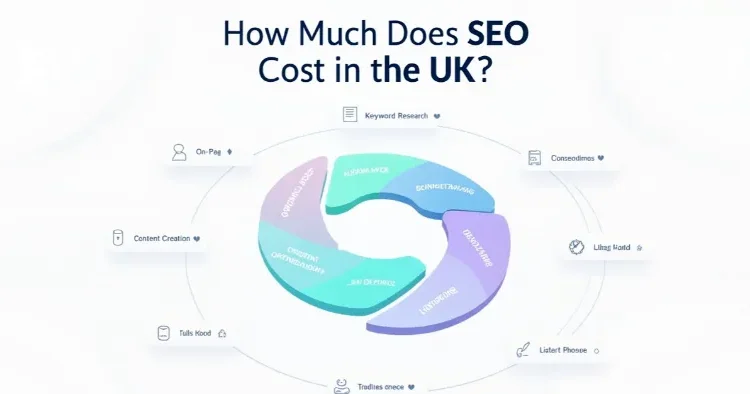
In today’s digital-first world, consumers rely on search engines to find local businesses, from coffee shops to plumbers. If your business isn’t appearing at the top of these search results, you’re likely losing customers to competitors. Local SEO—search engine optimization tailored for location-based searches—ensures your business is visible to nearby customers actively seeking your products or services. By leveraging local SEO, you can drive more foot traffic, increase conversions, and ultimately boost profits.
What Is Local SEO and Why Does It Matter?

Local SEO optimizes your online presence to rank higher in location-based searches, particularly on Google. When someone searches “near me” or specifies a city, like “best bakery in Seattle,” local SEO ensures your business appears in the “Local Pack”—the top three results on Google Maps and search pages. It’s about connecting with customers in your geographic area at the moment they’re ready to buy.
Why is this important? A 2024 study found that 46% of Google searches have local intent, and 75% of local searches lead to a store visit within 24 hours. For businesses like restaurants, retail stores, or service providers, local SEO translates directly into revenue. It’s not just about visibility—it’s about capturing high-intent customers who are ready to spend. By mastering local SEO, you position your business as the go-to choice in your community.
Key Features of Local SEO
Local SEO combines several strategies to boost your visibility. Here are the core components:
- Google Business Profile (GBP) Optimization: Your GBP is your digital storefront. It includes your business name, address, phone number (NAP), hours, photos, and reviews, ensuring consistency across platforms.
- Local Keyword Research: Targeting geo-specific keywords, like “dentist in Miami” or “car repair Chicago,” helps you rank for relevant searches.
- Citations and Directory Listings: Consistent NAP on directories like Yelp, Yellow Pages, and niche platforms signals credibility to search engines.
- Customer Reviews: Positive reviews on Google and other sites build trust and influence rankings.
- Local Link Building: Backlinks from local websites, such as community blogs or chambers of commerce, enhance your authority.
- Mobile Optimization: Most local searches happen on smartphones, so a fast, mobile-friendly website is essential.
- Schema Markup: Structured data helps search engines understand your business’s location and services, boosting your chances of rich snippets.
These elements work together to make your business discoverable, driving more local customers to your door.
Benefits of Local SEO for Profit Growth

Local SEO offers tangible benefits that directly impact your bottom line. Here’s how local SEO increases profits:
1. Increased Visibility in Local Searches
Ranking in the Local Pack or on Google’s first page makes your business – Increased Visibility in Local Searches: Appearing in the Local Pack or on Google’s first page dramatically increases your chances of attracting customers. A 2025 study showed that 96% of consumers use the internet to find local services, and 32% of SEO experts rank a Google Business Profile as the top factor for local rankings. Local SEO ensures your business is front and center.
2. Targeted, High-Intent Traffic
Local searches come from customers ready to act. Someone searching “emergency plumber near me” needs immediate help, making these leads highly likely to convert. Local SEO leads have a close rate of around 15%, far higher than traditional advertising.
3. Cost-Effective Marketing
Unlike paid ads, local SEO delivers long-term results with minimal ongoing costs. Optimizing your GBP, earning reviews, and building citations are low-cost strategies with high ROI. A 2025 report found that 48% of local SEO campaigns achieve exceptional ROI, ideal for small businesses.
4. Enhanced Customer Trust
Consistent business information and positive reviews build credibility. A Statista survey revealed that 98% of U.S. consumers read online reviews, with 76% doing so regularly. Responding to reviews shows you value customers, encouraging more purchases.
5. Boosted Foot Traffic
Local SEO drives Online-to-Offline (O2O) purchases. A customer might find your store online and visit to buy in person, especially for businesses like retail or car dealerships. This seamless connection increases sales.
6. Competitive Edge
If competitors aren’t optimizing for local SEO, you gain a head start. In competitive markets, ranking higher than rivals ensures you capture more market share.
These benefits make local SEO a powerful driver of revenue growth.
Challenges of Local SEO
Despite its advantages, local SEO has challenges. Addressing these proactively ensures success:
- Consistency Issues: Inconsistent NAP across directories confuses search engines and customers. Regular audits are necessary to maintain accuracy.
- Review Management: Negative reviews can harm your reputation, and encouraging positive ones takes effort. Responding professionally to all feedback is critical.
- Algorithm Changes: Google’s frequent updates require staying current on trends like voice search or AI-driven results.
- Resource Limitations: Small businesses may lack time or expertise. Outsourcing to experts or using tools can help but may strain budgets.
- Local Competition: Saturated markets demand robust strategies, including quality content and backlinks.
- Technical Complexity: Mobile optimization, fast load times, and schema markup require technical know-how.
By planning for these challenges, you can maximize local SEO’s impact.
Emerging Trends in Local SEO for 2025

To stay competitive, embrace these 2025 local SEO trends:
1. Voice Search Optimization
With 55% of consumers using voice search for local businesses, optimize for conversational queries like “Where’s the nearest gym?” Use natural, long-tail keywords to capture these searches.
2. AI-Powered SEO
AI tools analyze trends, optimize listings, and predict customer behavior, making your strategy more effective. They’re becoming essential for staying ahead.
3. Hyper-Local Content
Content tailored to neighborhoods or local events boosts relevance. A café could blog about community festivals, strengthening local ties.
4. Video Content
Videos are increasingly appearing in local results. Create short clips showcasing your business or customer testimonials, optimized with local keywords.
5. E-E-A-T Focus
Google’s E-E-A-T (Experience, Expertise, Authoritativeness, Trustworthiness) guidelines prioritize credible, high-quality content. Publish expert-authored, locally relevant articles and ensure a seamless website experience.
6. Local Link Building
Guest posting on local blogs or partnering with community groups for backlinks signals authority. These links are gold for local rankings.
Adopting these trends keeps your business ahead of the curve, driving sustained profits.
Step-by-Step Guide to Implementing Local SEO
Ready to start? Follow these steps:
- Optimize Your Google Business Profile: Complete your GBP with accurate NAP, high-quality photos, and regular posts.
- Research Local Keywords: Use tools like Semrush or Google Keyword Planner to find geo-specific terms.
- Build Citations: Submit your business to directories like Yelp and ensure NAP consistency.
- Encourage Reviews: Ask happy customers for reviews and respond to all feedback professionally.
- Create Local Content: Publish blogs, videos, or social posts relevant to your community.
- Optimize for Mobile: Ensure your website is responsive and fast-loading.
- Leverage Guest Posting: Partner with local sites for backlinks, boosting authority.
For expert help, consider HQLinkers, specialists in guest posting and tailored SEO services to elevate your local presence.
Case Studies: Real-World Success with Local SEO
To illustrate how local SEO increases profits, here are two examples:
Case Study 1: Local Coffee Shop
A small coffee shop in Austin, TX, struggled to attract new customers. After optimizing their GBP, adding local keywords like “best coffee Austin,” and encouraging reviews, they saw a 40% increase in foot traffic within three months. Their blog posts about local events further boosted engagement, leading to a 25% revenue increase.
Case Study 2: Plumbing Service
A plumbing company in Chicago faced stiff competition. By building citations, earning backlinks from local blogs, and optimizing for “emergency plumber Chicago,” they climbed to the Local Pack. This led to a 50% increase in service calls and a 30% profit boost within six months.
These cases show local SEO’s transformative potential for businesses of all sizes.
Common Mistakes to Avoid
To ensure success, steer clear of these pitfalls:
- Ignoring Negative Reviews: Failing to respond can damage trust. Address concerns promptly and professionally.
- Inconsistent NAP: Discrepancies harm rankings. Use tools like Moz Local to monitor listings.
- Neglecting Mobile Optimization: A slow or non-responsive site frustrates users and hurts rankings.
- Overlooking Content: Thin or irrelevant content fails to engage. Focus on quality, local relevance.
- Skipping Analytics: Without tracking performance via Google Analytics or GBP Insights, you can’t refine your strategy.
Avoiding these mistakes ensures your local SEO efforts deliver maximum ROI.
Tools to Enhance Your Local SEO Strategy
The right tools simplify local SEO. Here are top recommendations:
- Google Business Profile: Free tool to manage your listing and track performance.
- Semrush: For local keyword research and competitor analysis.
- Moz Local: Ensures consistent citations across directories.
- Whitespark: Identifies local link-building opportunities.
- Yext: Automates citation management for multi-location businesses.
- BrightLocal: Tracks rankings, reviews, and local performance.
These tools streamline your efforts, saving time and boosting results.
Final Thoughts
Local SEO is a proven strategy to drive revenue by connecting your business with local customers. From increasing visibility and trust to attracting high-intent traffic, it directly impacts your bottom line. While challenges like consistency or competition exist, the benefits—higher profits, competitive edge, and long-term growth—make it a must for any local business. By embracing trends like voice search, AI, and hyper-local content, you can stay ahead in 2025 and beyond.





